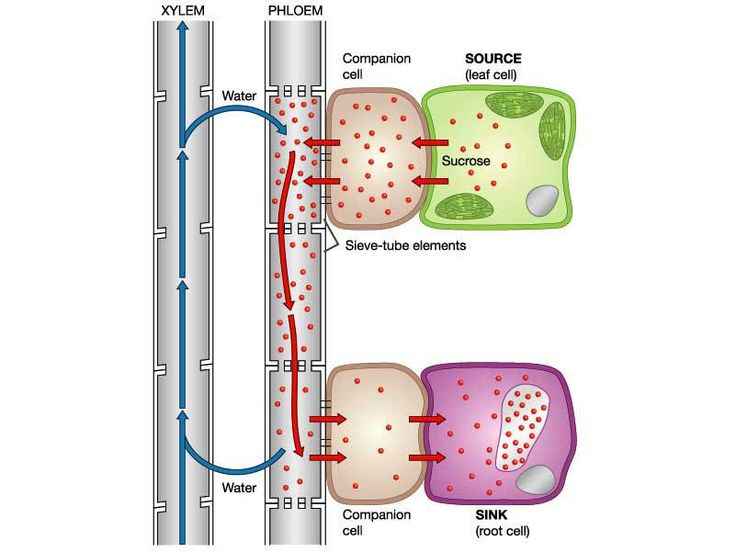translocation
1/6
There's no tags or description
Looks like no tags are added yet.
Name | Mastery | Learn | Test | Matching | Spaced |
|---|
No study sessions yet.
7 Terms
process of translocation
sucrose moved from cells in the source by active transport into phloem sieve elements. this decreases water potential in phloem so water follows sucrose into phloem by osmosis. hydrostatic pressure increases in phloem. there is less pressure in the next sieve element so phloem sap is squeezed into it through sieve plate down pressure gradient. meanwhile in sink, sucrose pumped out of phloem into sink cells by active transport. this lowers water potential in sink cells so water follows sucrose out of the phloem by osmosis. sink phloem therefore has lower hydrostatic pressure which causes pressure gradient along length of phloem. this is what causes mass flow of sap to source to sink
active transport of sucrose in phloem
proton pump actively transports H+ from sieve element into companion cell using atp. H+ and sucrose bind to co transport channel which allows them to move through channel into sieve element down a H+ conc grad. glucose is made in palisade cells by photosynthesis. some glucose is converted into fructose, then glucose and fructose bond to make sucrose. this diffuses into companion cell down sucrose conc grad

what is this diagram showing
active transport of sucrose in the phloem
keywords in translocation
active transport, water potential, hydrostatic pressure, pressure, osmosis, mass flow
2 pieces of evidence for translocation
ringing experiment, using radioactive carbon dioxide

ringing experiment- explain
it is evidence for translocation because the phloem above the girdle swells, suggesting that there is pressure being applied from above due to mass flow of sap. the cells below the girdle do not swell. analysis of the phloem above the ring shows accumulation of organic materials, but there is less organic material below the ring. tissues below the ring die over time due to lack of nutrients arriving in the phloem
using radioactive carbon dioxide- explain
plant is supplied with radioactive co2. plant kept in sunlight for minimum 6 hours. leaf photosynthesises, taking in the 14co2, converting it to radioactive sucrose. sucrose is loaded into the phloem and moved down the stem by translocation. if you cut the stem and place x ray film over it, dark patched will appear. these patches correspond to the position of the phloem, proving that sucrose is transported from the leaf (source) down the stem to the roots (sink)